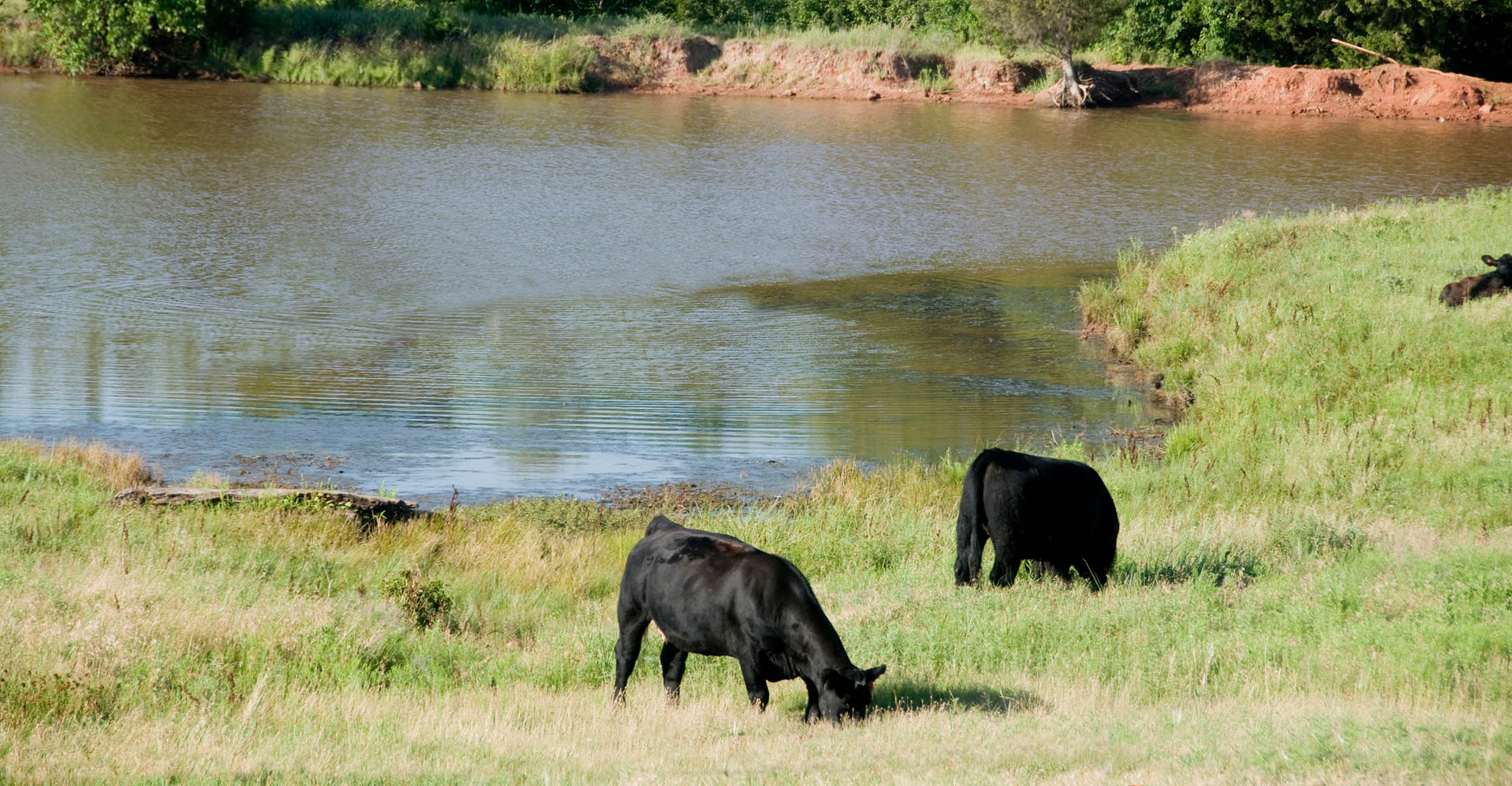
Keep an eye out for algae overgrowth in ponds this summer
Monday, July 25, 2022
Media Contact: Alisa Boswell-Gore | Agricultural Communications Services | 405-744-7115 | alisa.gore@okstate.edu
Most Oklahoma ponds are green thanks to algae that forms on the water, but just like anything else, too much algae can be a bad thing.
Algae is a normal occurrence in ponds unless it becomes too thick. That’s when pond owners are in danger of the most common fish kill scenario — algal die off. As millions of dead algal cells decompose, dissolved oxygen is rapidly used up, causing fish to suffocate.
To prevent this situation, Marley Beem — Oklahoma State University Extension aquaculture specialist — advises pond owners to watch for algal abundance.
“The simplest way to do this is to use a submerged object, something that you can put down into the water that is light colored,” he said.
On a sunny day, Beem said a submerged object will disappear from view when it has sunk less than 18 inches down in water.
“If the object disappears from view in less than 12 inches, that is a big warning that fish kill is possible because the algal bloom is getting too thick,” he said.
The first reaction of most pond owners with an algae problem is to use an herbicide to kill the algae, Beem said, but this seldom provides good long-term results. The most effective method for reducing the growth of algae is to starve it of nutrients and light. Algae rapidly repopulates when nutrient and light levels are high.
To reduce nutrient runoff to a pond, homeowners and commercial lawn care professionals should stop using fertilizers that contain phosphorous or apply only the amount of phosphorous and nitrogen needed. Soil tests available at county Extension offices tell homeowners the amount of fertilizer required to meet the needs of a lawn.
Beem said pond owners shouldn’t worry too much about algae because a healthy population of it is essential in a pond to produce oxygen for fish. People should keep an eye out for their pond algae growing thicker.
“If you see this happening, don’t delay,” he said. “Work with your county Extension office immediately to come up with steps to take to correct the problem.”
For more information on pond management, visit OSU Fact Sheets.
